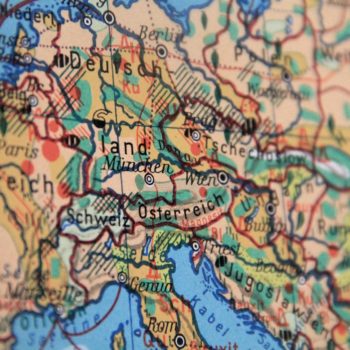European Video Market Map Shows Growing Video Footprint Across the Region
by Lindsay Rowntree on 12th Jan 2017 in News

Ecosystem maps are a popular navigational tool in the digital advertising industry, with one in particular being synonymous with the state of the industry. With the popularity of the LUMA landscape in the US market, it was noted that a European version would be of great value in navigating the complex European landscape.
Improve Digital heard the call to arms and have been producing their respected EU Market Maps for the past eight years, in an attempt to clarify the roles of the various industry players across the EU and the relationships between them. Today (12 January) Improve Digital announce the launch of their 2017 Video Market Map, in response to the significant growth of video advertising across the EU. Speaking exclusively with ExchangeWire, Kyra Steegs, Improve Digital’s senior director of video discusses wider trends she is seeing across the video industry.
As video specialists, it was important for Improve Digital to be able to share their knowledge with the market. According to Steegs, they were inspired by the maps of LUMA Partners and, with the rapid growth of video and its importance in the industry in terms of both revenue and technology, it only made sense to map out the video ad tech industry.
The Video Market Map (pictured below), featuring 121 companies across the video ecosystem, shows just how important video is across the EU and many names on that list will be recognised as relatively new on the scene. It was no surprise to Steegs that so many players exist in the space, with the expanding video ad tech industry having been the industry hot topic for some time now, with a shift towards video on strategic, technical, and service fronts. There is also an increasing trend of broadcasters and cable companies moving into ad tech.
When it comes to investment and growth in the video ad tech space, Steegs points out that media owners are more frequently looking for holistic platforms to monetise all their inventory across screens, so existing digital marketing players add video to their capabilities either themselves or via acquisitions: “This change of focus has caused the investment of the industry players to also move to video, resulting in more new players on the market and more M&A activity.“
While traditional TV still claims the lion’s share of ad spend, more and more content is becoming available via digital; and it is the biggest area of growth for tech players in this space, according to Steegs. With the move from more traditional TV to digital and programmatic, publishers in that space are also looking to own the technology, which has resulted in an increase in M&A activity.

Source: 2017 Video Market Map, Improve Digital
The outlook for video certainly looks rosy and, as Steegs confirmed, it will continue to grow and mature, developing to be the most important growth drivers of 2017. “Feeding this trend is the fact that we see a shift from TV budgets moving to digital and online video”, explained Steegs. “Conversion rates are higher online than they are on traditional TV; it has better individual targeting opportunities and has the advantage of using an automated buying process.”
However, Steegs was quick to point out that video’s superior performance won’t necessarily be a long-lasting trend: “Broadcast content providers are preparing themselves for the next step: programmatic TV”, explained Steegs. “In future, this will allow any TV ad buy to use data and automation to more precisely target specific consumer audiences. Although it is still a bridge too far at this time, devices such as Smart TV are increasing in popularity, opening up the potential for addressable TV.” Steegs clarified that Smart TV enables broadcast content providers to experiment with many possibilities through the potential ability to target audiences via the big screen, hence harnessing the engagement and effectiveness of traditional TV commercials.
Outside of the video and TV crossover, another notable trend, that has been a very hot topic of 2016, is out-stream video: “The difference between out- and in-stream video advertisement is growing bigger in terms of ad length, ad content, targeting, and pricing."
The first of, undoubtedly, many future video market maps, how does Steegs expect the video industry across the EU to develop over the next 12 months? “There will always be new companies entering the market and more companies currently operating in the traditional TV world will become part of the ad tech ecosystem. Consolidation will continue, but as long as brands continue to operate under their own name, that will be less visible in the market map.”
The 2017 Video Market Map, along with the Display Market Map can be viewed and downloaded via Improve Digital.








Follow ExchangeWire